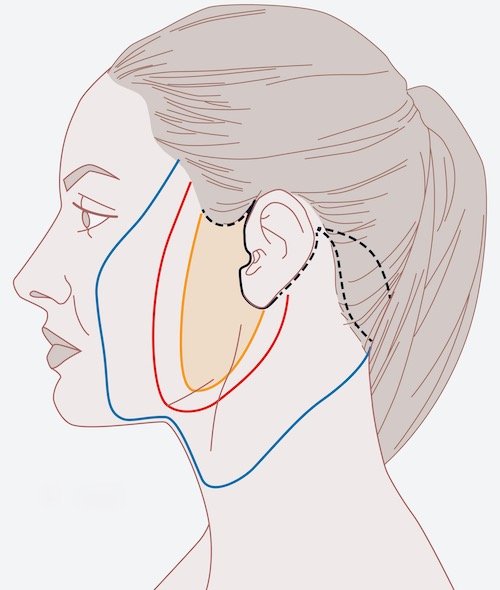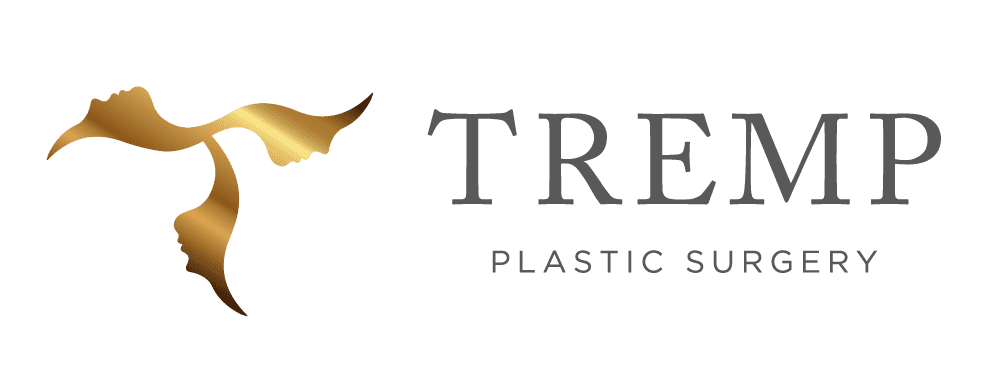- About
- Face & Skin
- Cellulite treatment
- Excessive sweating in women and men
- Facial and skin treatments
- Facial Surgery
- Hydrafacial treatment
- IV drips (vitamin infusions)
- Laser treatment
- Lip Lift
- Mesotherapy (skin structure )
- Special Offers by TREMP PLASTIC SURGERY
- Treatments with Skin Ceuticals
- Wrinkle and facial treatments with botulinum
- Wrinkle and facial treatments with filler
- Face
- Breast
- Body
- Offers
- Blog
- Contact
- EN
- DE
There are different methods of facelifting to tighten sagging areas of the face for the long term. The classic facelift can be divided into different layers.
With an SMAS (= superficial musculo-aponeurotic system) lift, the deeper facial contours are lifted and redynamized. This largely restores the original, natural appearance of the face. At the same time, the combined autologous fat treatment can be carried out to improve skin quality and restore volume loss.


What are the benefits of a facelift?
With a facelift, sagging tissue in the entire facial area can be corrected and lifted. The lost harmony in the face can be balanced out and the face rejuvenated.
In addition to tightening the facial skin, a facelift can also lift lowered eyebrows, the cheek area or a sagging neck contour. The upper lip is often treated at the same time as a bullhorn lip lift.
Incisions (incisions) and extent of dissections
Short and long incisions in front of and behind the ear: A) Mini lift B) Short incision C) Traditional
Causes of sagging skin on the face
The processes in the skin slow down with age, which contributes to general skin ageing. In addition to biological ageing, internal and external factors support skin sagging.
Hormonal changes are a major factor in sagging skin. Lifestyle (e.g. smoking, unhealthy diet) and increased sun exposure can contribute to collagen damage and accelerate and permanently damage the skin structure.
Facelift for face lifting
Lasting results can be achieved with a facelift. A facelift is a complex procedure that often takes several hours. Excess skin and tissue is surgically removed. At the same time, the skin is tightened and the deeper structures are repositioned.
Modern surgical techniques allow for a gentle and safe treatment without significant scarring. The downtime is also comparatively short. Naturalness should always be the top priority for a facelift.
SMAS plication as a facelift method
Until the 1970s, the superficial skin was tightened without the SMAS during a facelift. With an SMAS lift, the facial contours (muscle / connective tissue plate) are lifted and supported.
The SMAS plication technique primarily treats the deeper, hanging structures. The preparation is above the SMAS. After the SMAS is exposed, the mobile part of the SMAS is fixed to the non-mobile SMAS part by several dissolvable sutures.
The excess SMAS can then be tightened.
MACS Lift for face lifting
In a MACS lift, the incision is made in front of the ear. The preparation is less extensive than with a classic face and neck lift.
The tightening is performed using sutures that lift the sagging tissue vertically. The midface and eye area in particular are tightened, rather than the neck. The advantage is a small incision line and low risk of injury to the facial nerves.
The Simple MACS Lift can be used to tighten the lower third of the face. It can be used to treat the neck and facial cheeks as well as the angle between the neck and chin. The Extended MACS Lift can also be used to correct the nasolabial folds and the midface.
Deep plane facelift to tighten the midface
The deep plane facelift is an option for sagging facial areas. In a deep plane lift, the layer of tissue under the SMAS is prepared. The skin does not have to be separated from the SMAS.
This technique is particularly suitable for patients with changes in the midface and the nasolabial fold or marionette line. The results are long-lasting (approx. 10-12 years), whereby an annual maintenance treatment (e.g. with ultrasound/radiofrequency treatment is recommended.
Advanced SMAS face lift
The sub-SMAS preparation is the basic principle to tighten the overlying skin structures for a long time.
The skin and the SMAS flap are prepared separately (lamellar). The SMAS flap has a different vector than the skin flap.
The direction of traction is more vertical than the skin flap. Part of the SMAS flap can also be moved behind the ear to tighten the neck and cheek region.
Lateral SMASectomy
With this technique, only the outer part between the mobile and non-mobile SMAS is tightened. The tightening vector is usually perpendicular to the nasolabial fold, but can be adjusted depending on the shape of the face.
What are the possible risks of a face lift?
Possible complications include post-operative bleeding and blood pressure should remain within the normal range after the operation. Patients with high blood pressure should have their blood pressure properly adjusted by their family doctor before the surgical facelift. Other possible risks are Excessive scarring, infections, circulatory disorders of the skin or nerve injuries.
Can a facelift be combined with other treatments?
In recent years, several non-surgical facial treatments have become increasingly popular, which can be complemented with a facelift.
July 19, 2024

